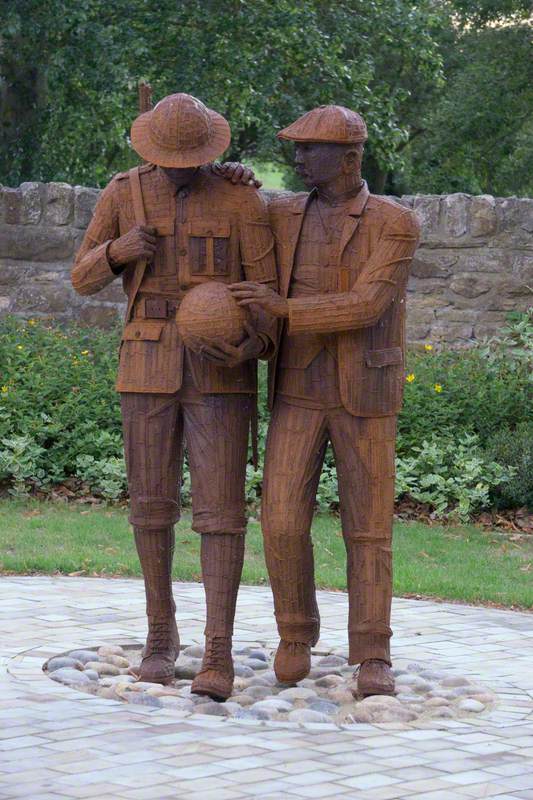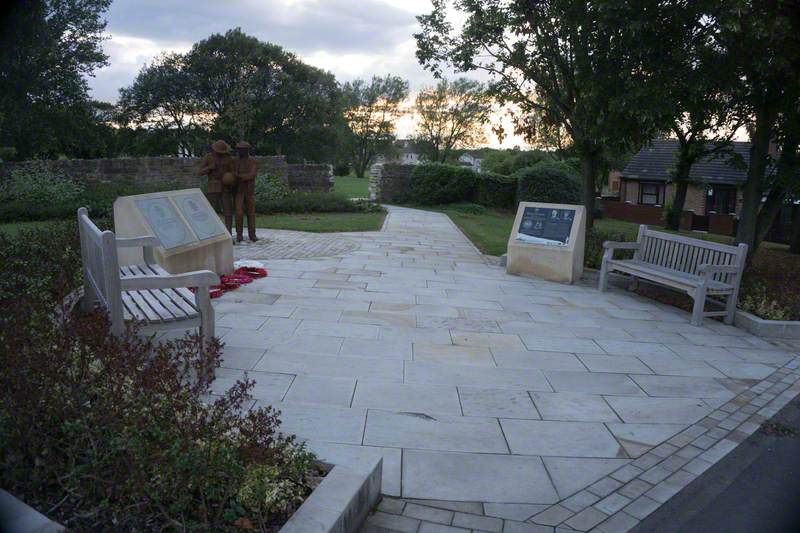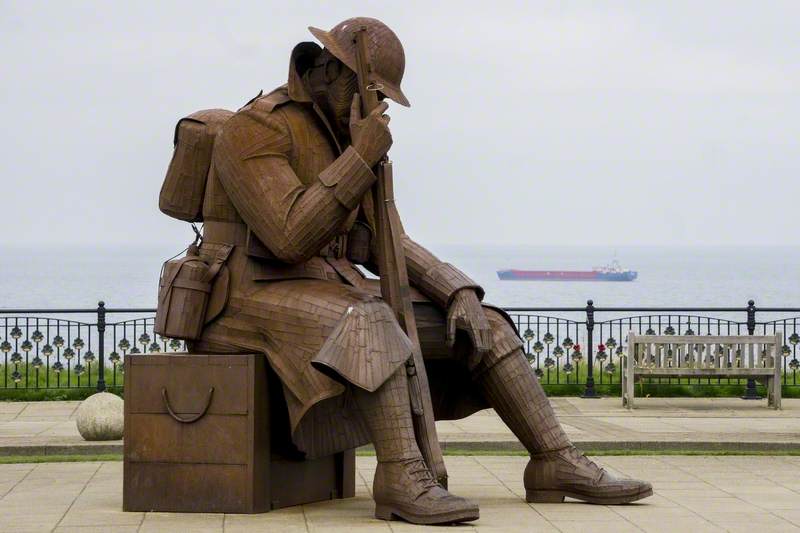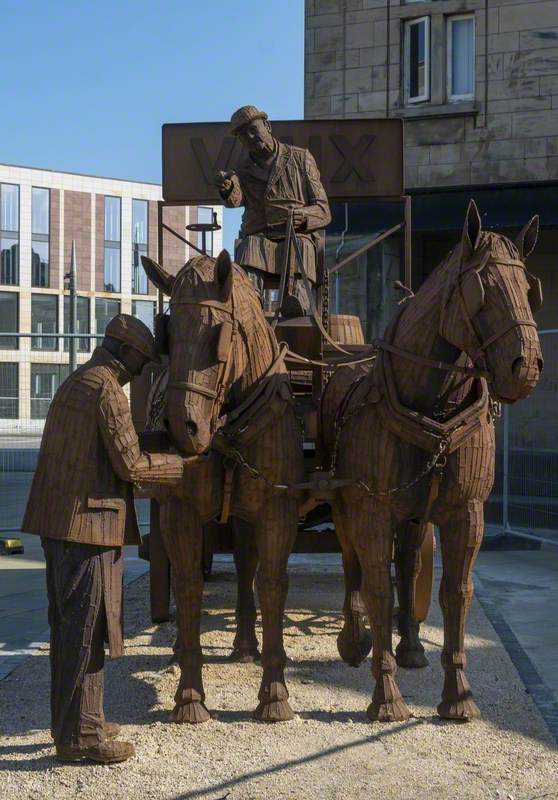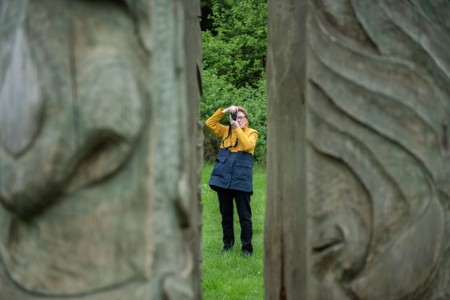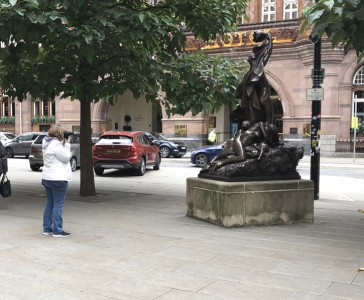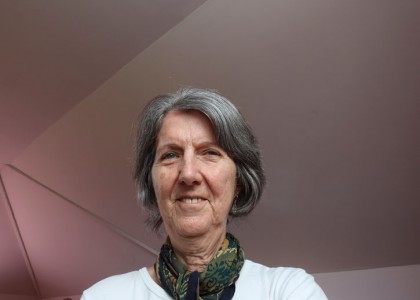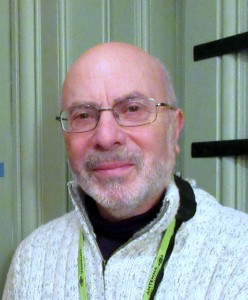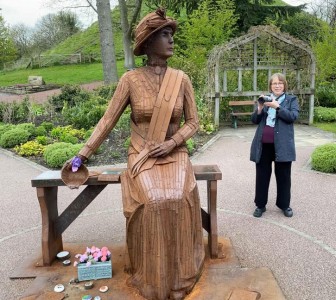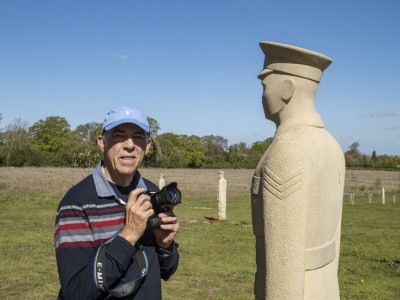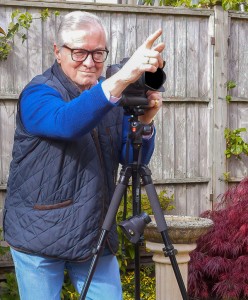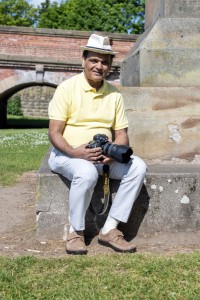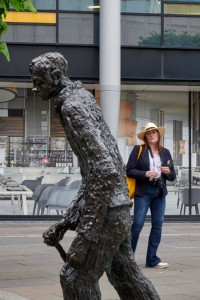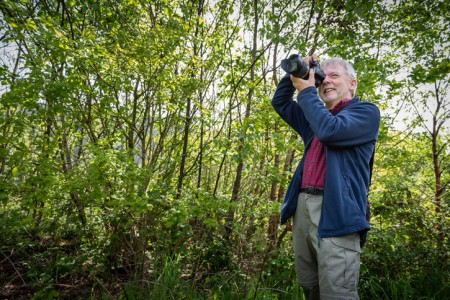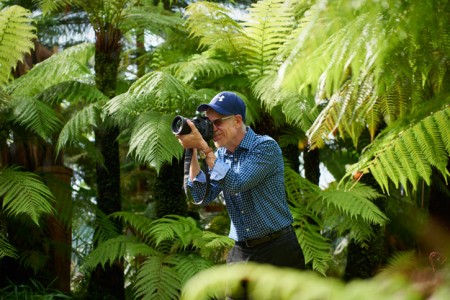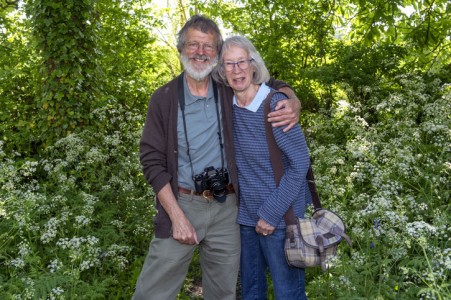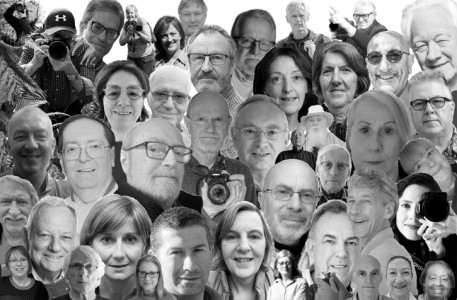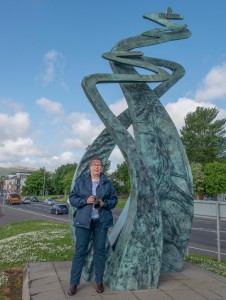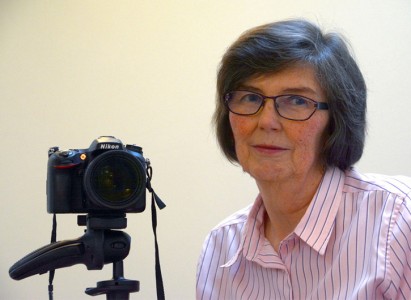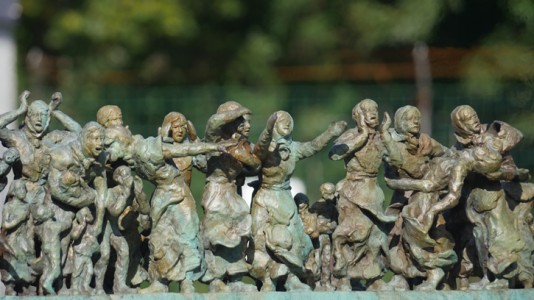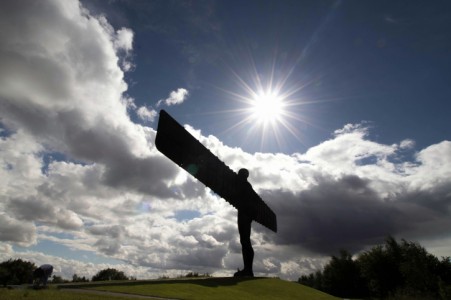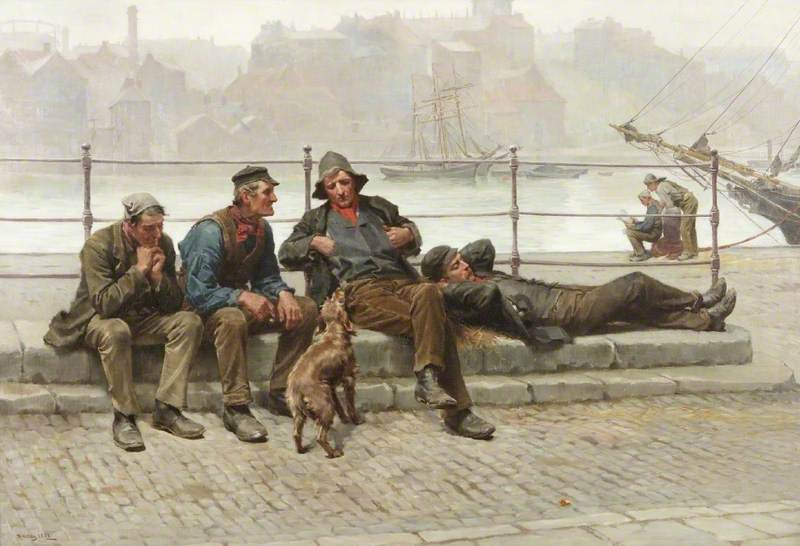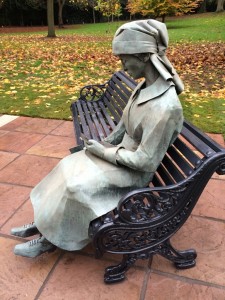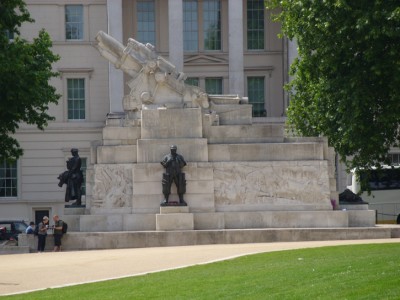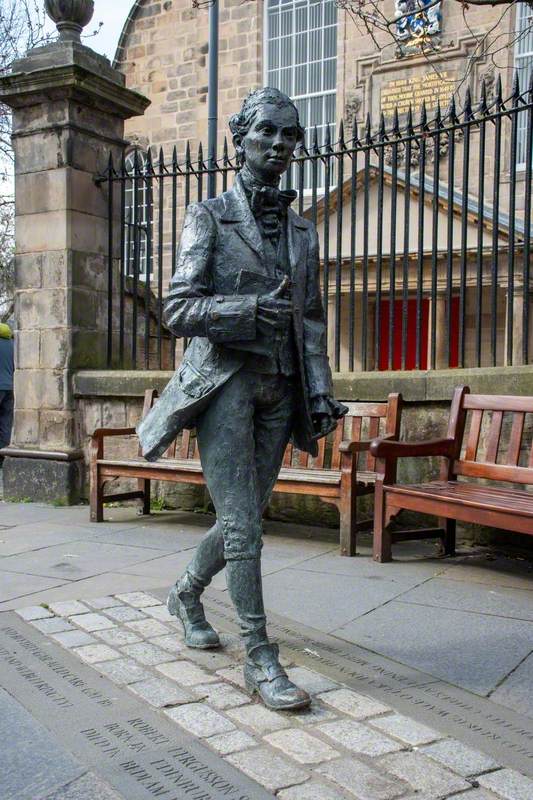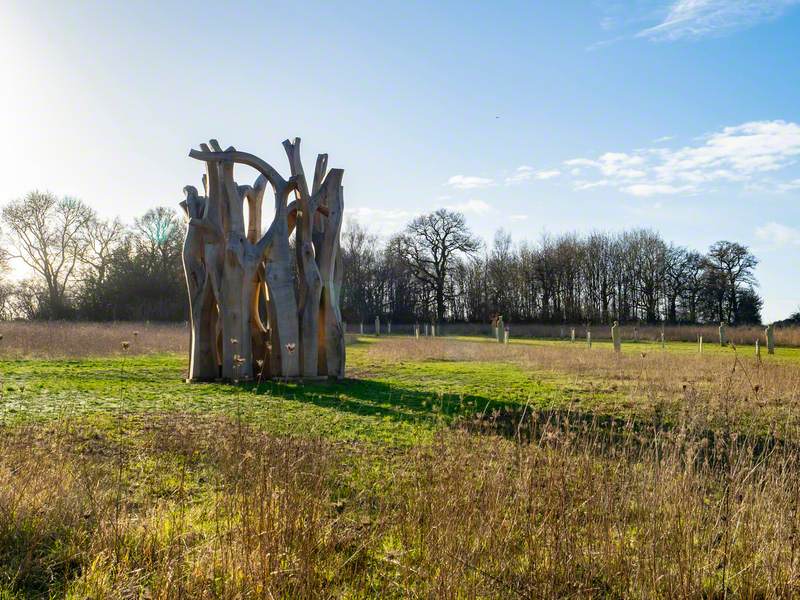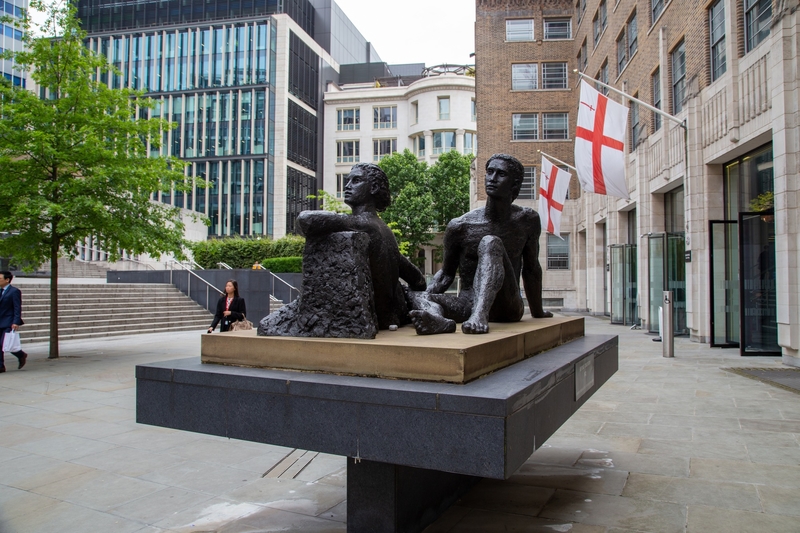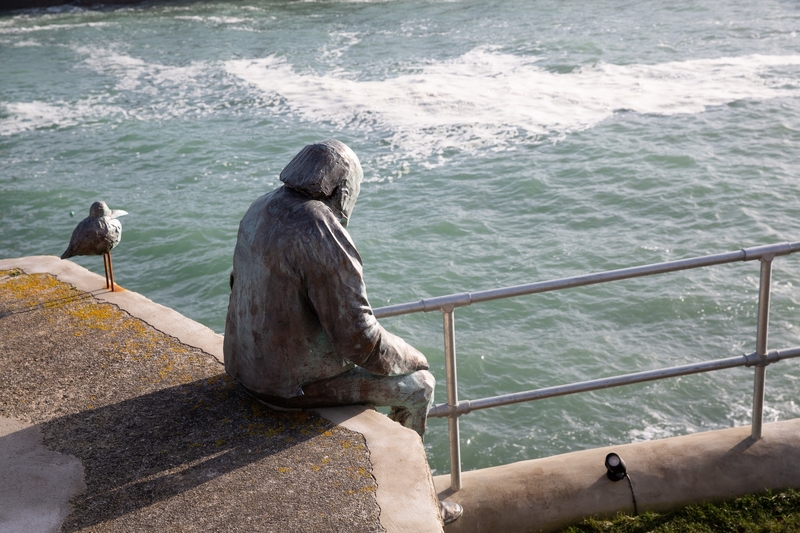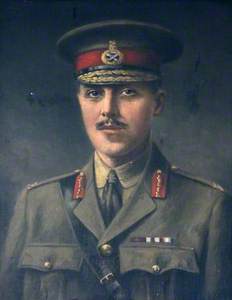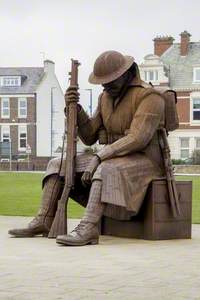A dejected, uniformed soldier returns home from war. Head bowed beneath his tin hat, he appears burdened with the weight of the rifle on his back and the horror of his battlefield experiences. A second figure in civilian dress, a miner, and a friend, wears the familiar broad flat cap. He reaches out to the soldier, placing a reassuring hand upon his shoulder.
This life-size, rusted Corten steel statue of a soldier and a civilian is in a First World War memorial garden, dedicated to the four fighting Bradford brothers of Witton Park, a colliery village in County Durham. It was created by the well-known local sculptor Ray Lonsdale, in 2017.
The Ball and the Bradford Boy, sometimes referred to as the Bradford Brothers, is a beautifully crafted sculpture which encapsulates and unites the experience or shared memories of so many families and generations in my home area and further afield.
The Bradford brothers – Thomas, George, James and Roland – all fought in the First World War. Three of the four were killed in action. Only one returned home to Witton Park. To honour their memory, local councillors Robert Yorke and Christine Wilson chose the centenary of Roland's Victoria Cross award – and his death – to create a memorial garden.
Roland Bradford won the Victoria Cross (the highest award for gallantry in 'the presence of the enemy' that can be awarded to the British armed forces) for his leadership of two Durham Light Infantry battalions on the Somme in 1916. He was killed the next year, aged 25, on 30th November 1917.
His brother James, aged 27, had fallen earlier that year during the Battle of the Somme, earning him a Military Cross. Also remembered in this statue is George Bradford's heroism – the third brother was killed, aged 31, in a naval engagement near Zeebrugge in April 1918, and was also awarded the VC.
Roland and George Bradford are the only two brothers ever to be awarded the Victoria Cross. Their VC commemorative stones are side by side in Witton Park. The eldest brother Thomas was the only son of colliery manager George Bradford to return home. Thomas was later knighted for his contributions to public service.
Lonsdale's sculpture depicts the civilian offering the soldier a lace-up football – representing the Bradfords' pre-war footballing and cricketing pursuits, and as a way of helping the soldier reconnect with civilian life – a bridge between the war and home.
The work tenderly couples loss with life, the fallen with the survivors, and memorial and culture, as the war heroes are remembered in the context of their mining heritage. The sculptural figures also unite the heroism, history, and community of Witton Park and all County Durham's soldiers and families.
This dual purpose – commemorating those in the North East but also all forces personnel – can be seen in another sculpture by Lonsdale, Eleven-O-One (Tommy).
I also recorded 'Tommy' for Art UK's sculpture project, and it is a privilege to have recorded both sculptures. I feel very honoured to be part of recording such meaningful pieces of art.
Elaine Vizor, ARPS, Art UK Volunteer Photographer
Elaine was part of our team of hundreds of volunteers who recorded every public sculpture on the Art UK website
